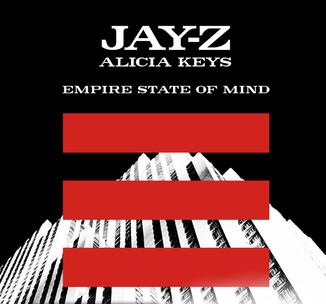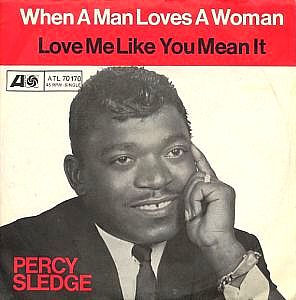April 1 is National Atheist Day in the United States. Below is your holiday soundtrack:
Follow Tunes Du Jour on Facebook
Follow me on Bluesky
Follow me on Instagram
Joy Division and New Order are two of the most influential bands in the history of rock music. They emerged from the punk scene of the late 1970s and evolved into different styles and genres, leaving behind a legacy of timeless songs and albums.
Joy Division was formed in 1976 by four young men from Manchester, England: Ian Curtis (vocals), Bernard Sumner (guitar), Peter Hook (bass), and Stephen Morris (drums). They were inspired by the energy and attitude of the Sex Pistols, but they soon developed their own distinctive sound and vision. Their music was dark, atmospheric, and haunting, reflecting the bleakness and alienation of their industrial surroundings. Their lyrics were poetic, complex, and literary, dealing with themes such as love, death, isolation, and mental illness. Curtis, who suffered from epilepsy and depression, delivered his vocals with a deep, expressive, and sometimes erratic voice.
Joy Division released two albums in their short career: Unknown Pleasures (1979) and Closer (1980). Both are considered masterpieces of post-punk, a genre that emerged after the initial wave of punk and experimented with new sounds and influences. Joy Division’s songs, such as “Love Will Tear Us Apart,” “Atmosphere,” “Transmission,” and “She’s Lost Control,” are among the most iconic and influential of the era. They also created a distinctive visual identity, with minimalist and abstract album covers designed by Peter Saville.
Joy Division’s career was tragically cut short by the suicide of Curtis on May 18, 1980, the eve of their first American tour. His death shocked and saddened the music world, and also mythologized the band as a symbol of intensity and authenticity. Joy Division’s music has inspired countless artists across genres and generations, from U2 and Radiohead to Nine Inch Nails and The Killers.
After the death of Curtis, the remaining members of Joy Division decided to continue making music under a new name: New Order. They were joined by Gillian Gilbert, a keyboardist and guitarist who added a new dimension to their sound. New Order’s music was a radical departure from Joy Division’s. They embraced synthesizers, drum machines, and dance music influences, creating a fusion of rock and electronic music that was groundbreaking and influential. Their music was also more upbeat, colorful, and optimistic, reflecting their personal and artistic growth.
New Order released several albums throughout the 1980s and 1990s, each one exploring new musical directions and possibilities. Their most famous and successful song is “Blue Monday,” a 1983 single that is the best-selling 12-inch record of all time. The song is a synth-pop masterpiece, with a catchy melody and a pulsating rhythm. Other notable songs by New Order include “True Faith,” “Regret,” “World In Motion,” and “Bizarre Love Triangle.” New Order’s music has influenced many artists in the fields of synth-pop, techno, house, and alternative rock, such as Depeche Mode, Pet Shop Boys, The Chemical Brothers, and LCD Soundsystem.
Besides their musical achievements, Joy Division and New Order have also been involved in various philanthropic efforts. One of their most notable contributions was their participation in the Artists Against Apartheid project, a campaign that aimed to raise awareness and funds for the anti-apartheid movement in South Africa. In 1986, New Order recorded a song called “State of the Nation,” which denounced the racist regime and expressed solidarity with the oppressed people. The song was released as part of an album called Conspiracy of Hope, which also featured songs by U2, Sting, Peter Gabriel, and others. The album was a benefit for Amnesty International, a human rights organization that works to end injustice and abuse around the world.
Joy Division and New Order also supported the Hacienda, a legendary nightclub in Manchester that was owned by their record label, Factory Records. The Hacienda was a cultural hub that hosted many famous bands and DJs, such as The Smiths, The Stone Roses, Madonna, and Happy Mondays. It was also a place where people of different backgrounds, races, and sexual orientations could mingle and enjoy music and dancing. The Hacienda was a pioneer of the rave culture, which promoted peace, love, and unity through electronic music. However, the club also faced financial and legal troubles, and eventually closed in 1997. Joy Division and New Order donated much of their royalties and profits to keep the club running, and also performed there several times.
Joy Division and New Order are two bands that have made a lasting impact on music and culture. If you want to listen to some of their best songs, check out this playlist.
Follow Tunes du Jour on Facebook
Follow Tunes du Jour on Twitter
Follow me on Instagram
Nineteen ninety-four was not one of rock and pop music’s pivotal years. I didn’t realize how lackluster it was until compiling this week’s Throwback Thursday playlist. I always begin such lists with a look at the pop charts of the year being spotlighted. What a sad state of affairs they were in 1994! I found around 15 good songs that peaked in the top 40 that year, and included all of them in this list (except for Ƭ̵̬̊’s “The Most Beautiful Girl in the World,” which is not on Spotify). A few great songs came close to making the Top 40, such as Nine Inch Nails’ “Closer” (peaked at #41) and The Breeders’ “Cannonball (peaked at #44). More great (mostly “alternative”) tracks would have made the Billboard Hot 100’s top 40 if not for Billboard‘s archaic rule that in order for a song to be eligible for the Hot 100, it needs to be commercially released as a single. Record companies stopped releasing many singles in the late 80s so as to force consumers into buying more profitable full-length albums. What that means is the Hot 100, which was supposed to represent the 100 most popular songs in the US, did not represent the 100 most popular songs in the US. And what mad the top 40 in 1994 was a lot of wussy drek. And Kurt Cobain died in 1994. Not a good year for music. Here are its gems:
Follow Tunes du Jour on Facebook.
Follow Tunes du Jour on Twitter.
Follow me on Instagram.
The music of 1999 shows the century coming to a close in grand style, as if to say the next year the party will be over, oops, out of time, so this year we better party. Latinx artists were crossing over to the mainstream pop chart. Cher and Santana, who first charted in the 1960s, scored the biggest hits of their careers. Artists who made their chart debuts include Eminem and Britney Spears. Pure pop exploded, though the charts made room for country, hip hop, electronica, and big beat. As one who values diversity, I loved hearing all these different genres and styles bump up against each other on the radio. Here are 30 prime examples of the music that hit in 1999.
Follow Tunes du Jour on Facebook.
Follow Tunes du Jour on Twitter.
Follow me on Instagram.

Inspired by the season and the December 4 birthdays of Jay-Z, The Beach Boys‘ Dennis Wilson, The Byrds’ Chris Hillman, Pansy Division’s Jon Ginoli, Freddy Cannon, Dionne Farris, Anna McGarrigle, Adamski and Southside Johnny.

Inspired by the November 25 birthdays of Rancid’s Tim Armstrong, Screaming Trees’ Mark Lanegan, Jocelyn Brown, Percy Sledge, Stacy Lattisaw, Bob Lind, Lighthouse Family’s Tunde Baiyewu and EPMD’s Erick Sermon.

Inspired by the August 21 birthdays of The Clash‘s Joe Strummer, Kacey Musgraves, Kelis, Kenny Rogers, Jackie DeShannon, Prodigy’s Liam Howlett, and System of a Down’s Serj Tankian.